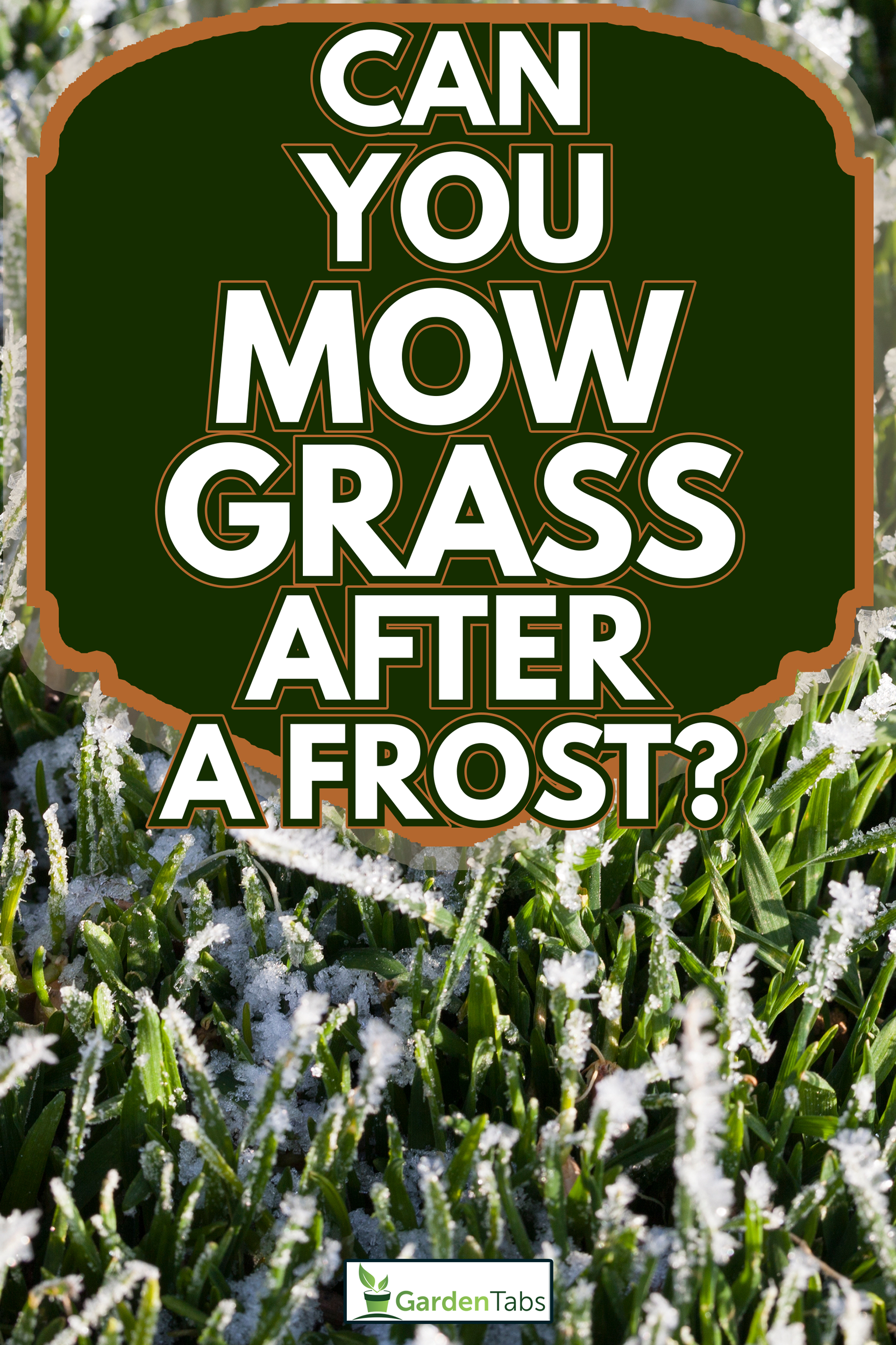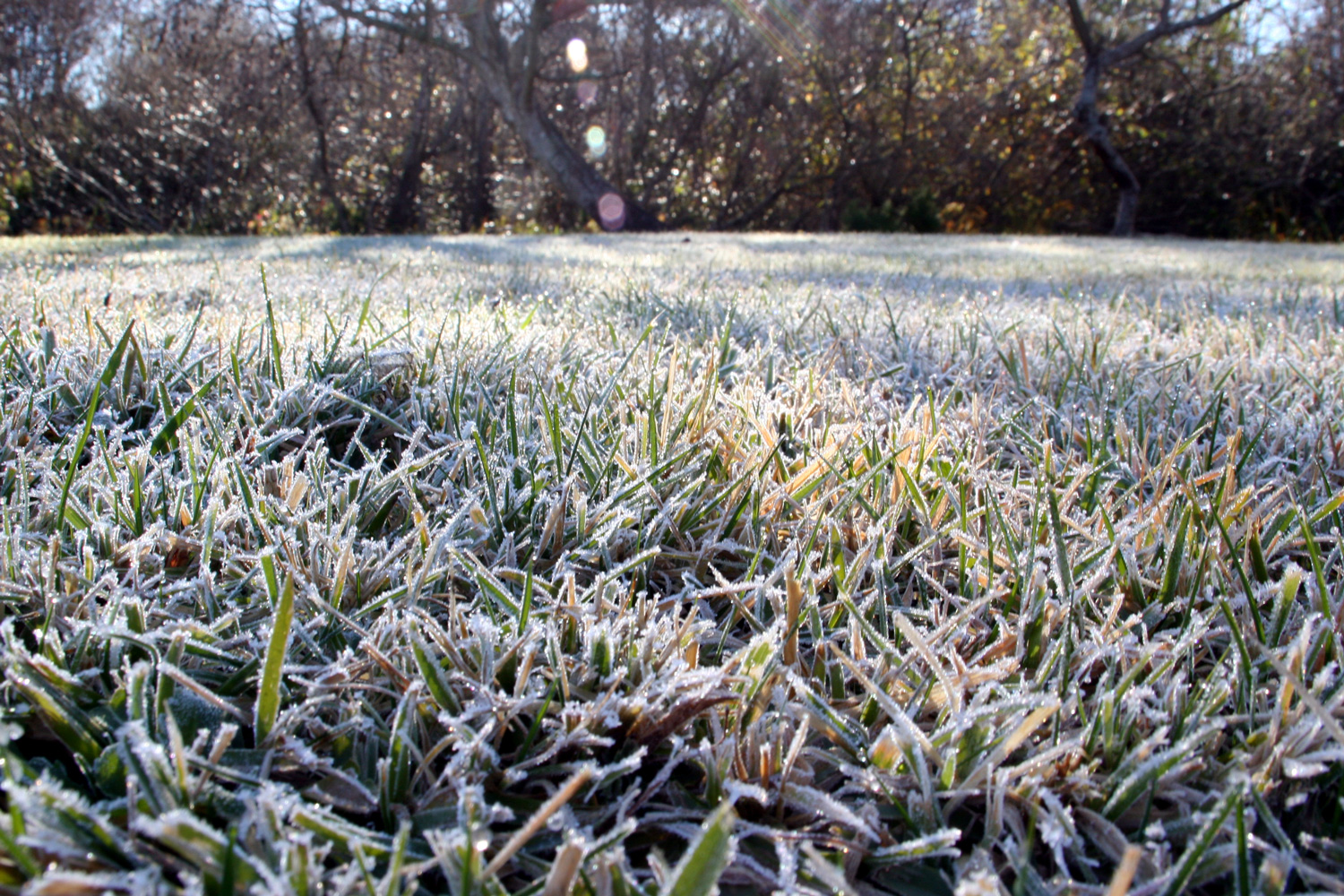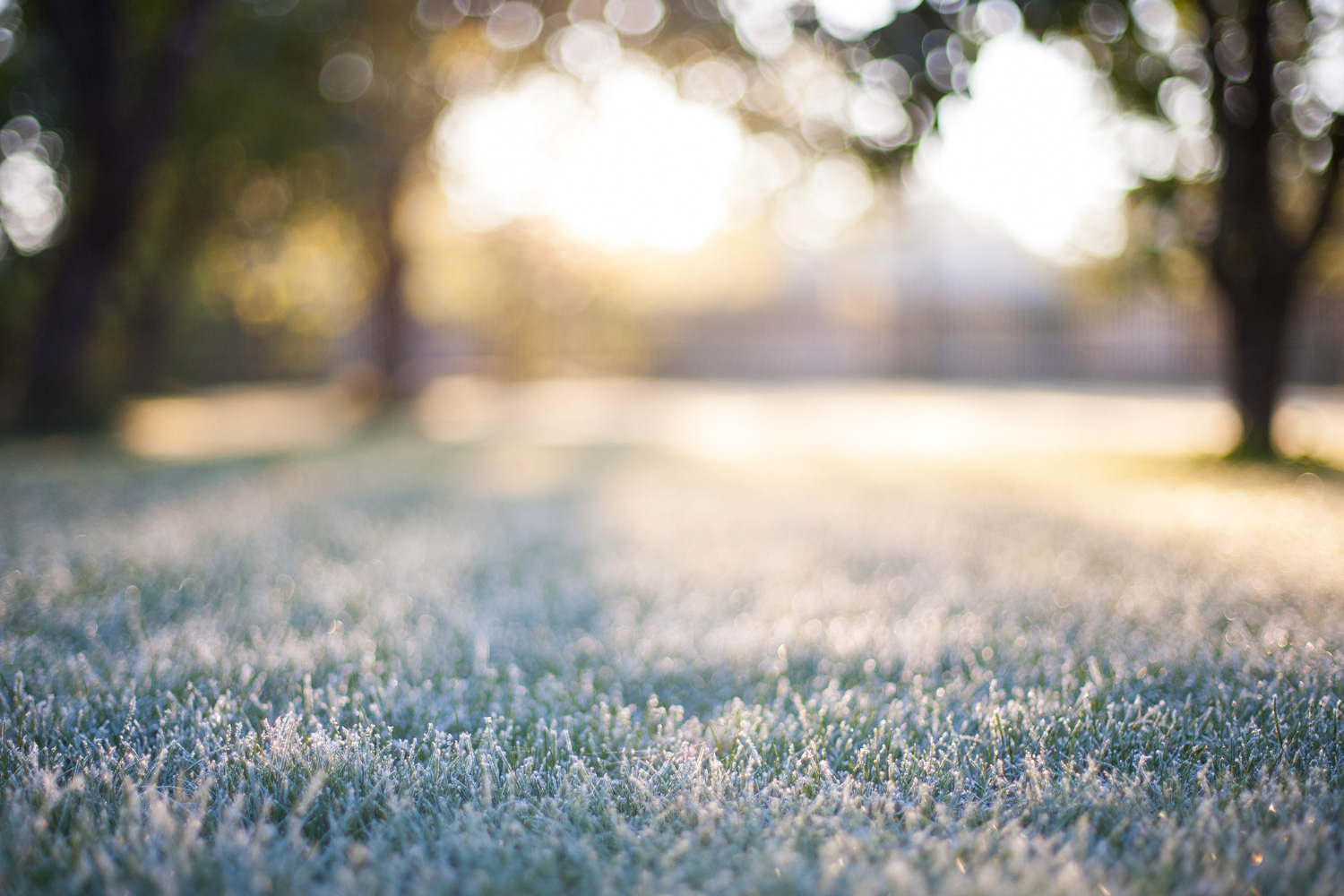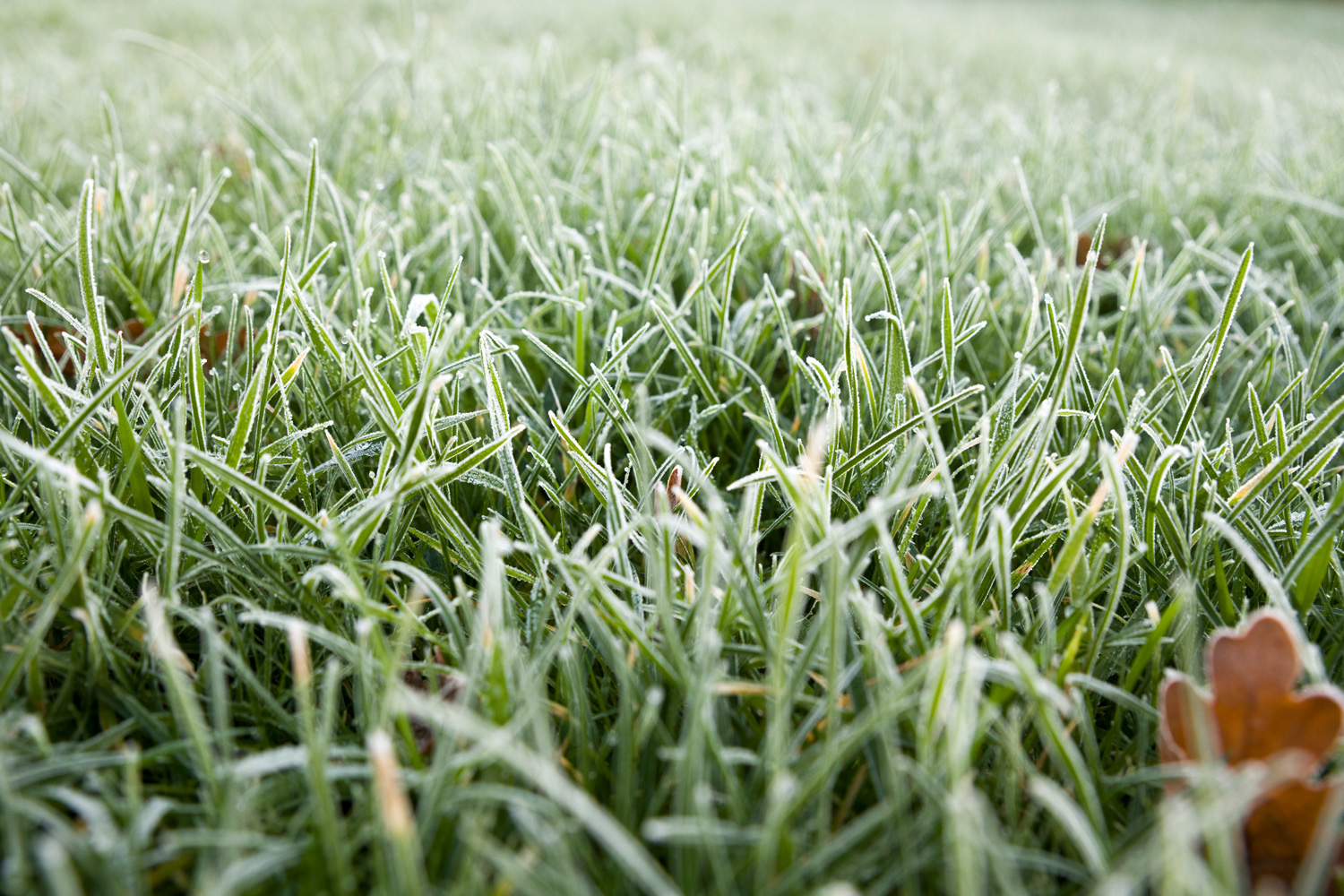Growing and maintaining a lawn can feel endless at times. Did it recently get cold enough to frost, and are you unsure whether mowing is a good idea? Will cutting the grass too soon after a frost kill it? Luckily, we've done our research and have the answers to these questions below. Let's dive in!
If it has recently frosted, we don't recommend mowing your lawn. Generally, when the grass gets too cold, it goes into a brief shock period.
Furthermore, giving your lawn enough time to defrost fully before turning on the lawn mower is essential. You also want to ensure your grass is dry before mowing, so many conditions must be met.
As we begin, we will cover all things mowing and discuss whether it's okay or not to cut grass after a frost. Whether it's your first winter with a lawn or you need tips for the upcoming cold season, we're here to help. With that said, let's jump right into this topic!

Should You Cut The Grass After A Frost?

No. Cutting your grass after a recent frost is not generally a good idea. Typically, when grass gets cold enough to freeze or frost, it becomes hard and goes into a shock.
During this time, each blade of grass is more sensitive than usual. If you decide to turn on the lawn mower and go to town, you could risk the health of your grass.
For that reason, it's best to wait until your grass fully thaws before cutting it. Additionally, you want to ensure the lawn is dry before cutting, as wet grass doesn't do well with mowing.
According to experts, even walking on frozen grass can harm it. Now imagine driving a hefty mower over it: damage will happen. At the end of the day, your grass is a living organism, so you should treat it as such.
Ideally, wait until your grass is dry and settled and the weather outside is good before mowing.
What Happens If You Mow Frosty Grass?
If you decide to mow frosty grass, expect damage to occur. As we mentioned, frozen grass is hypersensitive. Cutting it with a handheld or drivable mower can destroy the grass blades and even kill entire sections of your lawn.
In addition, mowing too soon after the grass becomes frozen can stunt it once the spring/summer hits. You are likely to notice bald patches and even discoloration.
It's also generally better to stay off frozen grass entirely. So if it recently dropped below 30 degrees and your lawn looks frosted, keep yourself and others off it.
Furthermore, you also want to avoid cutting the grass when wet. That means you shouldn't grab the lawn mower while your lawn dethaws.
During the frosting and defrosting period, grass blades become very sensitive and damaged. They need to dethaw and dry out naturally to come back and stay alive.
Grass will typically defrost in a few days, so worst case, you have an awkward period of overgrown grass. However, it's better for grass to be alive and overgrown than dead and freshly mowed.
How Cold Does It Have To Be For Grass To Freeze?
In general, it needs to be colder than 40 degrees Fahrenheit for grass to freeze. Like many plants in your garden, grass will get too cold and become frosted once it hits a specific temperature.
If your lawn has water, it could freeze much easier. Typically, water and moisture near your grass increase its chances of frosting and dying during a cold spell.
So if the weather calls for cooler temperatures, we don't recommend turning on the sprinklers. Of course, most grass varieties can withstand a freeze or two during the winter season.
It's not that grass is sensitive to normal cold conditions; it's that it is prone to freezing and damage if water is present. Again, if it does frost, make sure to stay off your lawn and avoid mowing it at all costs.
Can Grass Survive Freezing?

Yes, grass can usually survive a freeze or two. In general, grass seedlings will be hardy through the winter season, eventually sprouting once the weather warms up in the spring.
However, if you have mature grass that freezes, it's likely to see patches discolor or even thin out. Again, not all grass varieties do well in the cold, which can vary somewhat.
According to Jonathon Green, you want to plant grass at least 45 days before the first frost of the winter. Doing this allows it to establish roots and settle into the ground.
Failing to give your lawn enough time to acclimate before a freeze can result in dead patches. Also, the healthiest lawns tend to be planted and grown during spring/summer, so you may want to wait.
With that said, some grass varieties do well in colder climates. These include:
- Annual ryegrass (Lolium multiflorum)
- Perennial ryegrass (Lolium perenne)
Of course, the annual ryegrass won't usually live more than a year before needing to be replanted, so we recommend the perennial option instead.
Even with winter-friendly grasses, you must ensure the seeds go into the ground a month or so before frosting begins. Just because your lawn can withstand winter doesn't mean it's invincible.
Do I Need To Mow The Grass In The Winter?

For those with grass that still grows during winter, you can continue to mow as long as the conditions are right. As we covered earlier, your lawn should be water and frost-free before cutting it.
That means if it has recently rained, snowed, or frosted, you need to wait. Typically, grass blades respond better to being mowed if they are dry and damage-free.
If the blades of grass on your lawn are frozen, cutting them can kill them. The same applies to wet grass.
Regardless of season/weather, you need to make sure the ground isn't too moist and isn't too cold. The grass won't grow very fast (or much at all) during the colder winter months.
So you won't need to follow such a routine mowing schedule as you would in the spring, summer, and even fall months. Many gardeners see themselves only cutting their lawns once or twice a month in the winter, so this won't be frequent.
Is It Better To Leave Grass Long Or Short In The Winter?
In general, you want to keep your grass shorter in the winter. Specifically, between two and 2.5 inches will be sufficient, so keep that in mind while cutting.
According to Davey.com, keeping the grass in your yard around two inches is the "sweet spot," which keeps snow from reaching the ground beneath.
Remember, the warmer the soil, the better your grass will grow. Moreover, the less snow and ice towards the roots of your grass, the better it will respond to chilly conditions.
With that said, you don't want to over-cut your lawn. Even though we recommend a shorter mowing setting, that doesn't mean going crazy.
For example, cutting down your grass to an inch or so can put stress on it. Considering that your lawn is already going through climate-related stress, adding to the list can be deadly.
Moderation is the key to a healthy, happy lawn here.
On the other hand, keeping grass super long can open the door to diseases. Especially in winter, anything over three inches can become a problem, so try to find that sweet spot.
When Is The Best Time To Plant Grass?
The best time of year to plant grass would be in the late spring and early summer. That's because the weather is just right, not too hot and not too cold.
For those with warmer grass varieties, planting yours in the later spring/early summer can be helpful because of the regular rain showers.
The ground is also a bit warmer during this time compared to early spring, which is beneficial.
According to Pennington Seed, moderate weather conditions are the key to growing grass, so keep that in mind when planting.
With that said, you can technically plant grass seeds whenever you want. Even if it's about to get cold outside, as long as your seedlings go into the soil 45 days before the first frost, they will pop up in the spring.
Again, this can mean a longer wait time for you, but you should be fine to plant grass regardless.
Is Grass Easy To Maintain During The Winter?

Yes, maintaining your lawn during winter will be less time-consuming than in the spring or summer. Considering you don't need to mow as often or fertilize, winter grass care is pretty low-key.
However, you will need to follow more rules in the colder months. For example, you can't cut the grass when it's frozen, the ground is wet, or there is a cold spell coming in the next few days.
You may also want to cut your grass shorter (2-2.5 inches) throughout the winter. These aren't major changes to your routine, so overall, we don't think winter lawn care is excessive.
To Wrap It All Up
Whether you have mature, established grass, or recently planted new seeds, it's critical to know when to mow during the winter. We found that you shouldn't cut grass after a frost/freeze but wait until it thaws and dries.
Mowing frosty grass can cause it to become stunted and even die, so this is imperative. You also want to keep the grass blades in your lawn between two and 2.5 inches, so on the shorter side.
Regardless, avoid mowing the grass if it's recently frozen, and don't forget to cut back on your schedule during the winter months!
Made it to the end? Check out these helpful related lawn posts below!
How To Make Bermuda Grass Dark Green [5 Helpful Tips]
